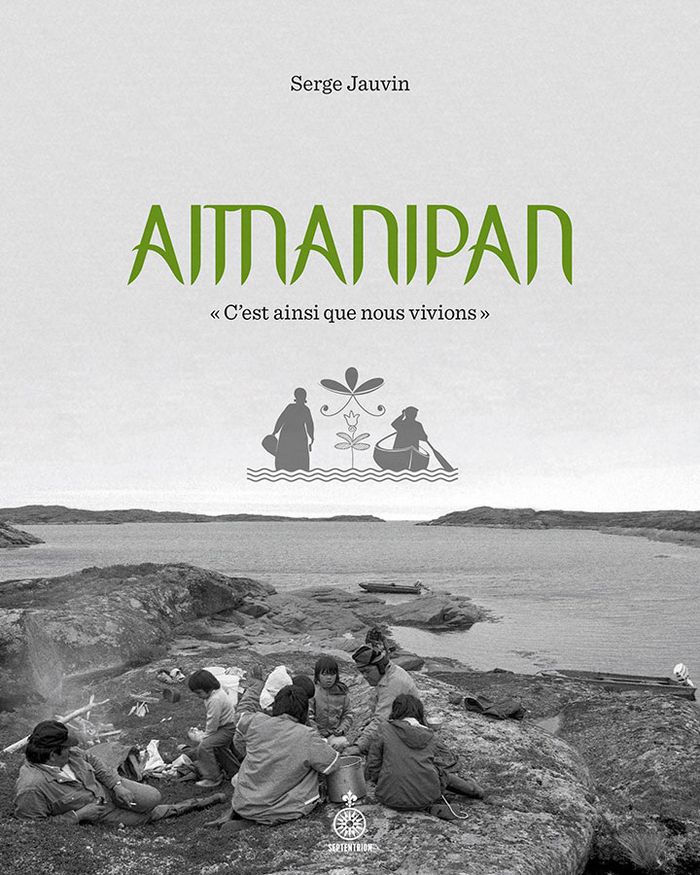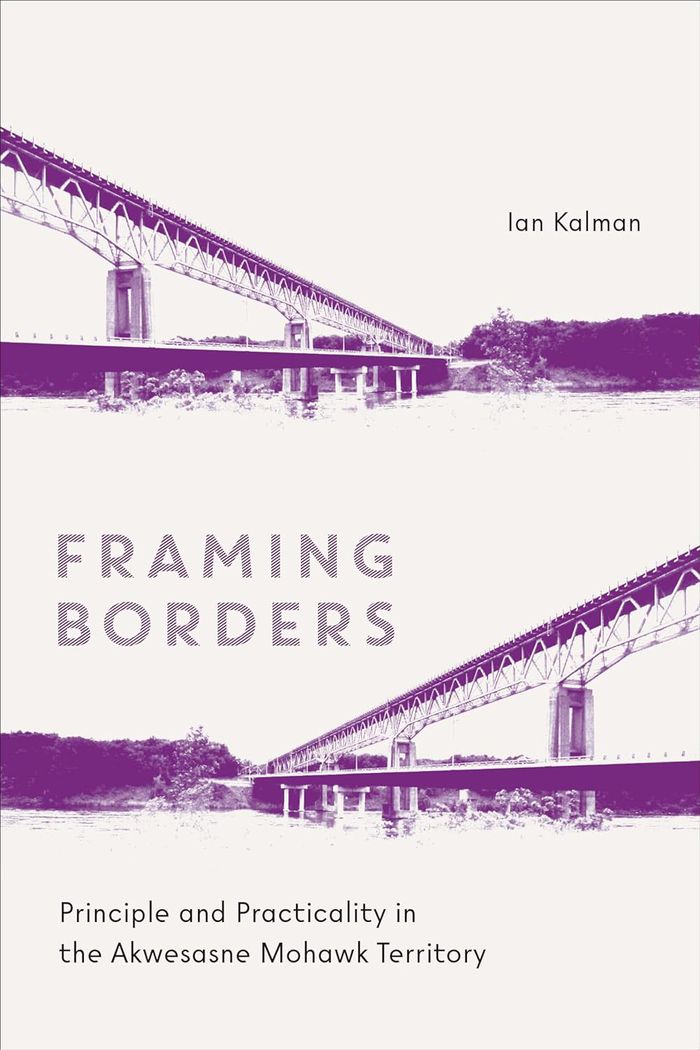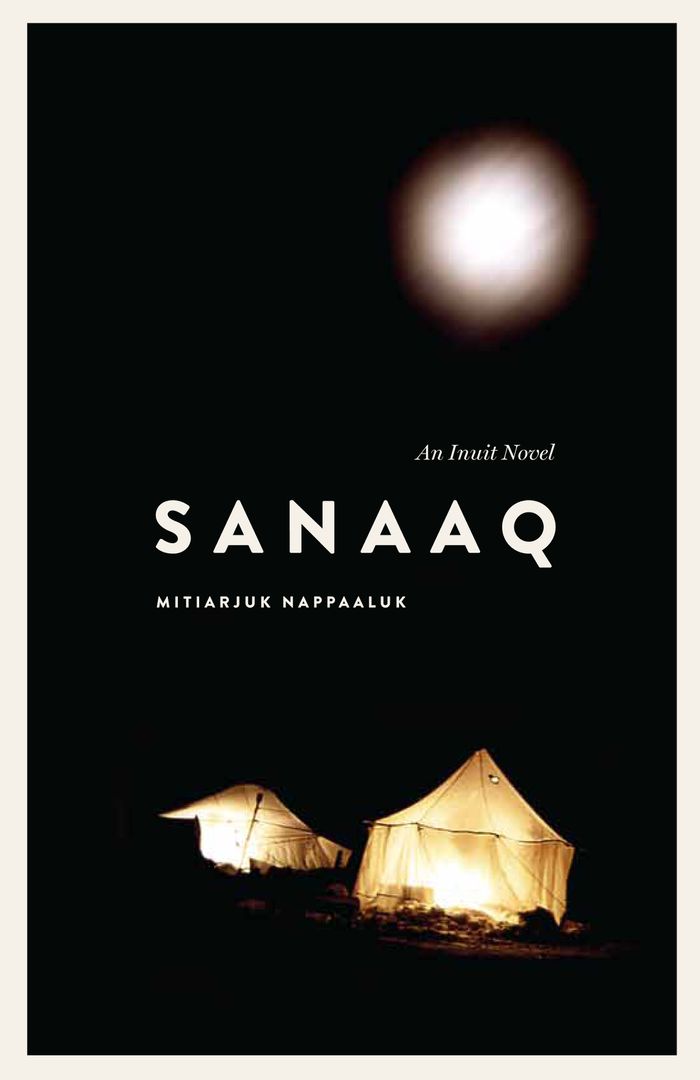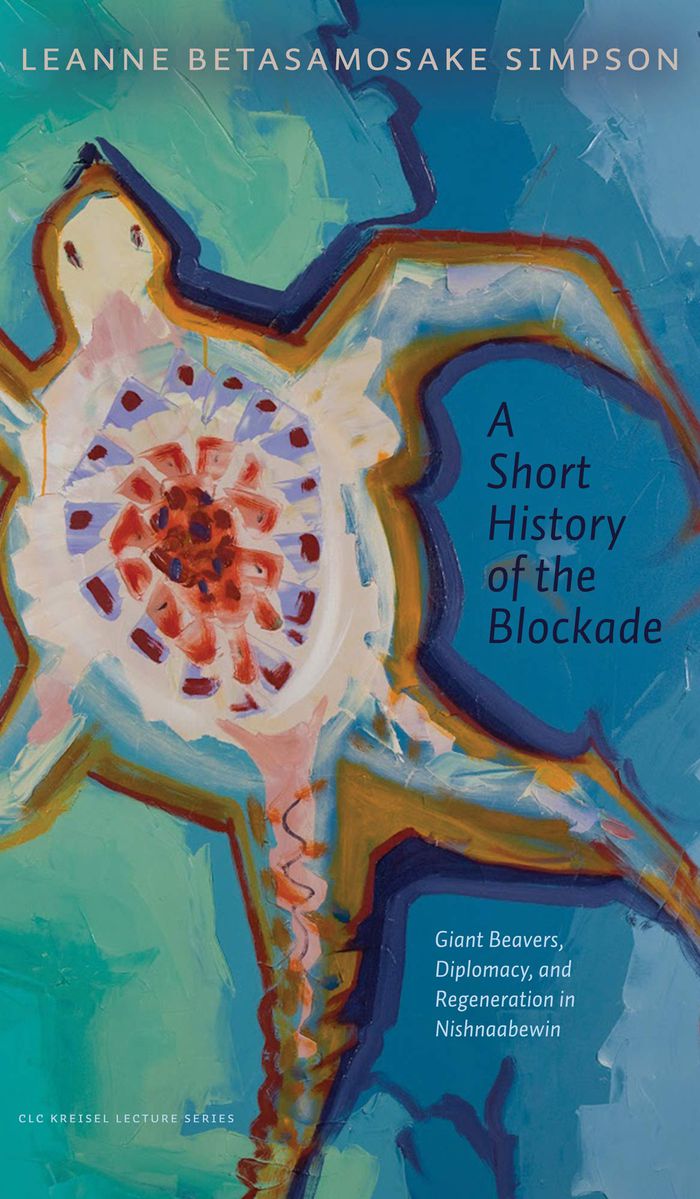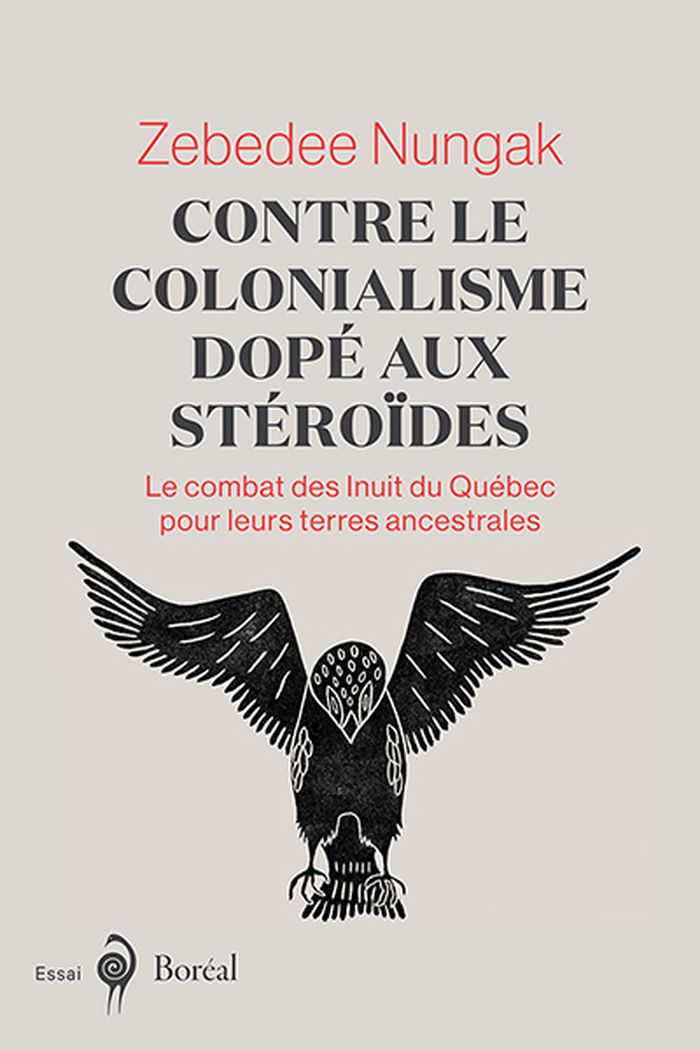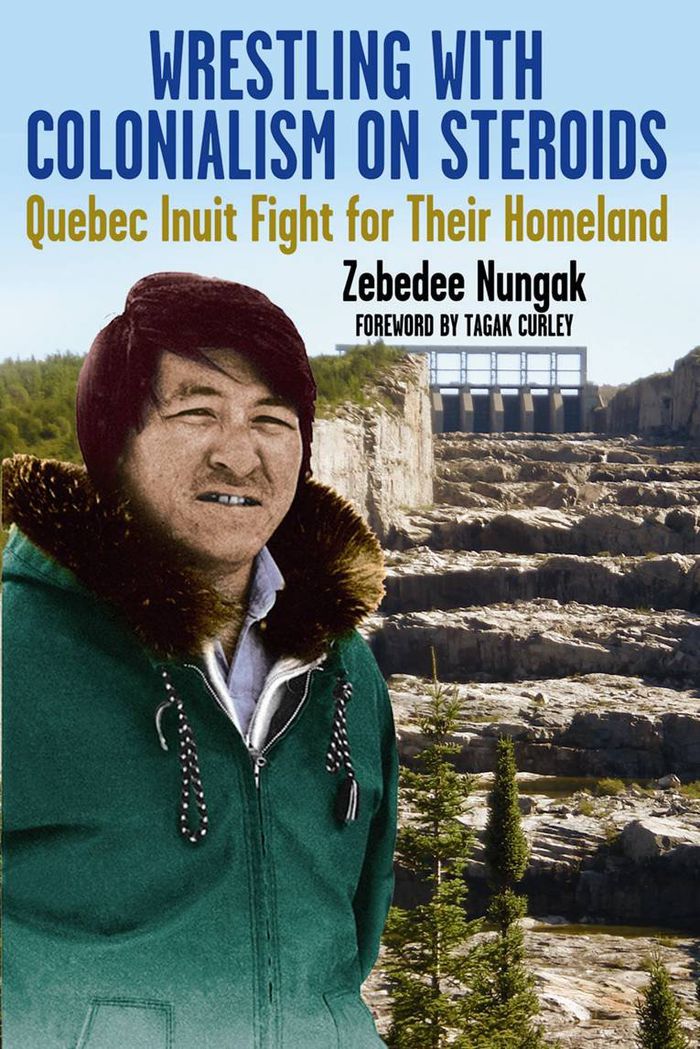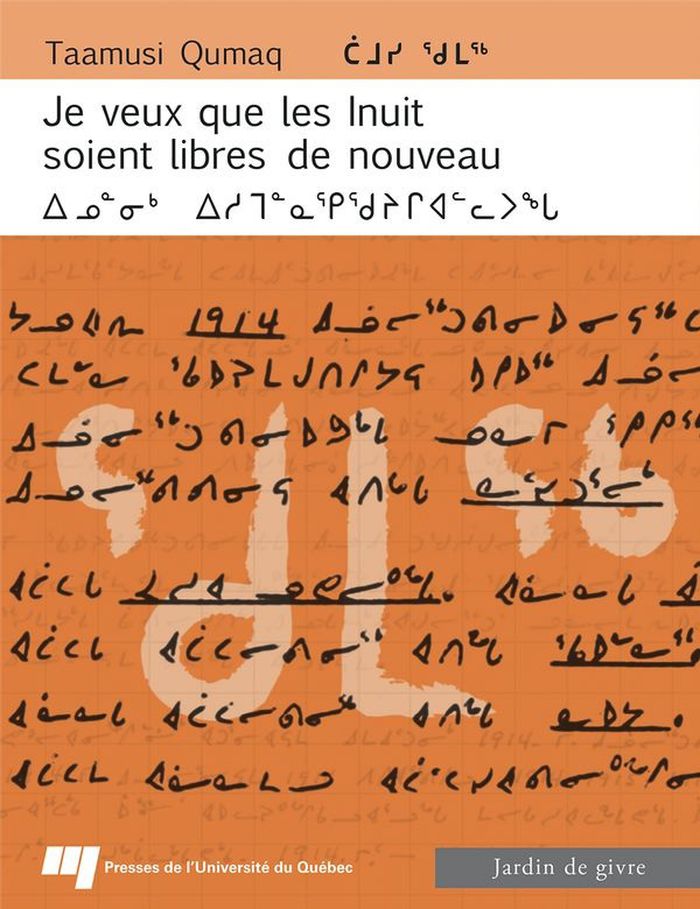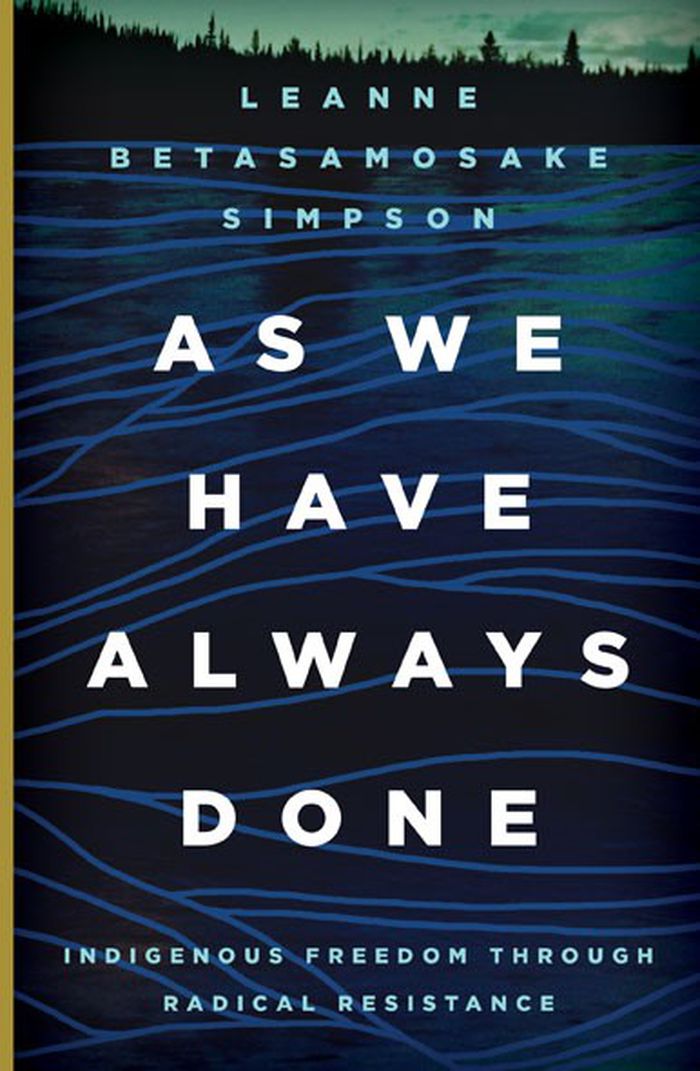$60.00
(available to order)
Summary:
Au début des années 1980, alors qu'il était jeune photographe, Serge Jauvin a passé un long séjour chez les Innus d'Unamen Shipu (La Romaine) dans la famille d'Hélène et de William-Mathieu Mark. Il a reçu d'eux le témoignage exceptionnel de leur passage du nomadisme à la sédentarité et l'a documenté à travers son journal et ses photographies. Cela lui a permis d'illustrer(...)
Aitnanipan : « C'est ainsi que nous vivions »
Actions:
Price:
$60.00
(available to order)
Summary:
Au début des années 1980, alors qu'il était jeune photographe, Serge Jauvin a passé un long séjour chez les Innus d'Unamen Shipu (La Romaine) dans la famille d'Hélène et de William-Mathieu Mark. Il a reçu d'eux le témoignage exceptionnel de leur passage du nomadisme à la sédentarité et l'a documenté à travers son journal et ses photographies. Cela lui a permis d'illustrer à la fois la vie dans la communauté et celle sur le Nutshimit, le territoire ancestral. Ce récit sur les derniers nomades de la Côte-Nord n'est pas le regard extérieur d'un étranger. Au contraire, il constitue un témoignage intime du savoir-être et du savoir-faire innu. Il est une empreinte indélébile qui témoignera aux générations futures de la contribution d'un peuple millénaire de l'Amérique septentrionale «qui vivait ainsi».
indigenous
$28.95
(available to order)
Summary:
''Framing borders'' addresses a fundamental disjuncture between scholastic portrayals of settler colonialism and what actually takes place in Akwesasne Territory, the largest Indigenous cross-border community in Canada. Whereas most existing portrayals of Indigenous nationalism emphasize border crossing as a site of conflict between officers and Indigenous nationalists,(...)
Framing borders: principle and practicality in the Akwesasne Mohawk territory
Actions:
Price:
$28.95
(available to order)
Summary:
''Framing borders'' addresses a fundamental disjuncture between scholastic portrayals of settler colonialism and what actually takes place in Akwesasne Territory, the largest Indigenous cross-border community in Canada. Whereas most existing portrayals of Indigenous nationalism emphasize border crossing as a site of conflict between officers and Indigenous nationalists, in this book Ian Kalman observes a much more diverse range of interactions, from conflict to banality to joking and camaraderie. ''Framing Borders'' explores how border crossing represents a conversation where different actors "frame" themselves, the law, and the space that they occupy in diverse ways. Written in accessible, lively prose, Kalman addresses what goes on when border officers and Akwesasne residents meet, and what these exchanges tell us about the relationship between Indigenous actors and public servants in Canada. This book provides an ethnographic examination of the experiences of the border by Mohawk community members, the history of local border enforcement, and the paradoxes, self-contradictions, and confusions that underlie the border and its enforcement.
indigenous
Sanaaq: An Inuit novel
$24.95
(available in store)
Summary:
This book is an intimate story of an Inuit family negotiating the changes brought into their community by the coming of the qallunaat, the white people. Composed in 48 episodes, it recounts the daily life of Sanaaq, a strong and outspoken young widow, her daughter Qumaq, and their small semi-nomadic community in northern Quebec. Here they live their lives hunting seal,(...)
Sanaaq: An Inuit novel
Actions:
Price:
$24.95
(available in store)
Summary:
This book is an intimate story of an Inuit family negotiating the changes brought into their community by the coming of the qallunaat, the white people. Composed in 48 episodes, it recounts the daily life of Sanaaq, a strong and outspoken young widow, her daughter Qumaq, and their small semi-nomadic community in northern Quebec. Here they live their lives hunting seal, repairing their kayak, and gathering mussels under blue sea ice before the tide comes in. These are ordinary extraordinary lives: marriages are made and unmade, children are born and named, violence appears in the form of a fearful husband or a hungry polar bear. Here the spirit world is alive and relations with non-humans are never taken lightly. And under it all, the growing intrusion of the qallunaat and the battle for souls between the Catholic and Anglican missionaries threatens to forever change the way of life of Sanaaq and her young family.
indigenous
$12.99
(available in store)
Summary:
In this book, award-winning writer Leanne Betasamosake Simpson uses Michi Saagiig Nishnaabeg stories, storytelling aesthetics, and practices to explore the generative nature of Indigenous blockades through our relative, the beaver—or in Nishnaabemowin, Amik. Moving through genres, shifting through time, amikwag stories become a lens for the life-giving possibilities of(...)
A short history of the blockade: Giant beavers, diplomacy, and regeneration in Nishnaabewin
Actions:
Price:
$12.99
(available in store)
Summary:
In this book, award-winning writer Leanne Betasamosake Simpson uses Michi Saagiig Nishnaabeg stories, storytelling aesthetics, and practices to explore the generative nature of Indigenous blockades through our relative, the beaver—or in Nishnaabemowin, Amik. Moving through genres, shifting through time, amikwag stories become a lens for the life-giving possibilities of dams and the world-building possibilities of blockades, deepening our understanding of Indigenous resistance as both a negation and an affirmation. Widely recognized as one of the most compelling Indigenous voices of her generation, Simpson’s work breaks open the intersections between politics, story, and song, bringing audiences into a rich and layered world of sound, light, and sovereign creativity. This publication reveals how the practice of telling stories is also a culture of listening, “a thinking through together,” and ultimately, like the dam or the blockade, an affirmation of life.
indigenous
Contre le colonialisme dopé aux stéroïdes : le combat des Inuit du Québec pour leurs terres ance
$18.95
(available in store)
Summary:
Pour les Québécois, le projet hydroélectrique de la Baie-James, lancé en 1971, a marqué le point culminant de la Révolution tranquille. C’était la prise de possession, physique et symbolique, de l’ensemble du territoire sur lequel le peuple du Québec était destiné à connaître enfin son plein épanouissement. Et si ce grand projet avait un côté sombre ? Et si, en affirmant(...)
Contre le colonialisme dopé aux stéroïdes : le combat des Inuit du Québec pour leurs terres ance
Actions:
Price:
$18.95
(available in store)
Summary:
Pour les Québécois, le projet hydroélectrique de la Baie-James, lancé en 1971, a marqué le point culminant de la Révolution tranquille. C’était la prise de possession, physique et symbolique, de l’ensemble du territoire sur lequel le peuple du Québec était destiné à connaître enfin son plein épanouissement. Et si ce grand projet avait un côté sombre ? Et si, en affirmant notre langue, notre culture et notre emprise sur le territoire, nous avions été sourds et aveugles à l’attachement d’un autre peuple à sa langue, à sa culture et au territoire que ses ancêtres occupaient depuis des millénaires ? Choquant, dérangeant, exprimant des vérités sur lesquelles on préférerait parfois fermer les yeux, ce livre est un document essentiel pour comprendre le point de vue des Inuit dans le bras de fer qui les a opposés à Québec. C’est une occasion unique d’entendre une voix qui a eu bien peu d’échos au Sud et, pour les Québécois, de faire un examen de conscience salutaire quant à la façon dont ils ont, par le passé, transigé avec les Premières Nations.
indigenous
$15.95
(available in store)
Summary:
For decades, the Inuit of northern Québec were among the most neglected people in Canada. It took The Battle of James Bay, 1971-1975, for the governments in Québec City and Ottawa to wake up to the disgrace. In this concise, lively account, Zebedee Nungak relates the inside story of how the young Inuit and Cree ''Davids'' took action when Québec began construction on the(...)
Wrestling with colonialism on steroids: Quebec Inuit fight for the homeland
Actions:
Price:
$15.95
(available in store)
Summary:
For decades, the Inuit of northern Québec were among the most neglected people in Canada. It took The Battle of James Bay, 1971-1975, for the governments in Québec City and Ottawa to wake up to the disgrace. In this concise, lively account, Zebedee Nungak relates the inside story of how the young Inuit and Cree ''Davids'' took action when Québec began construction on the giant James Bay hydro project. They fought in court and at the negotiation table for an accord that effectively became Canada’s first land-claims agreement. Nungak’s account is accompanied by his essays on Nunavik history. Together they provide a fascinating insight into a virtually unknown chapter of Canadian history.
indigenous
$25.00
(available to order)
Summary:
Chasseur, pêcheur, trappeur et homme politique, Taamusi Qumaq (1914-1993) est considéré comme l'un des grands penseurs des Inuit du Nunavik. Bien qu'unilingue en inuktitut, ce personnage exceptionnel a consacré sa vie à consigner, à l'écrit, la vie des siens ainsi que leur langue – et il s'est à ce titre mérité la reconnaissance de plusieurs institutions, dont celle de(...)
Je veux que les Inuit soient libres de nouveau
Actions:
Price:
$25.00
(available to order)
Summary:
Chasseur, pêcheur, trappeur et homme politique, Taamusi Qumaq (1914-1993) est considéré comme l'un des grands penseurs des Inuit du Nunavik. Bien qu'unilingue en inuktitut, ce personnage exceptionnel a consacré sa vie à consigner, à l'écrit, la vie des siens ainsi que leur langue – et il s'est à ce titre mérité la reconnaissance de plusieurs institutions, dont celle de l'Assemblée nationale du Québec. Son autobiographie, dont on retrouvera ici la traduction en français, ainsi que pour la première fois sous forme de livre le texte original en inuktitut, constitue un document de grande importance, tant pour les Inuit qui trouveront en lui un modèle, que pour les lecteurs du monde entier qui accèdent par ses mots à un univers culturel fascinant. Avec une introduction de Louis-Jacques Dorais, professeur à l'Université Laval. Ce livre est publié en collaboration avec l'Institut culturel Avataq.
indigenous
$26.99
(available in store)
Summary:
In 'As we have always done', Leanne Betasamosake Simpson locates Indigenous political resurgence as a practice rooted in uniquely Indigenous theorizing, writing, organizing, and thinking. Indigenous resistance is a radical rejection of contemporary colonialism focused around the refusal of the dispossession of both Indigenous bodies and land. Simpson makes clear that(...)
As we have always done: Indigenous freedom through radical resistance
Actions:
Price:
$26.99
(available in store)
Summary:
In 'As we have always done', Leanne Betasamosake Simpson locates Indigenous political resurgence as a practice rooted in uniquely Indigenous theorizing, writing, organizing, and thinking. Indigenous resistance is a radical rejection of contemporary colonialism focused around the refusal of the dispossession of both Indigenous bodies and land. Simpson makes clear that its goal can no longer be cultural resurgence as a mechanism for inclusion in a multicultural mosaic. Instead, she calls for unapologetic, place-based Indigenous alternatives to the destructive logics of the settler colonial state, including heteropatriarchy, white supremacy, and capitalist exploitation.
indigenous
Far off Metal River : Inuit lands. settler stories, and the making of the contemporary Arctic
$32.95
(available in store)
Summary:
In 1771, Samuel Hearne, an employee of the Hudson's Bay Company, set off with a group of Dene guides to explore part of the Central Arctic. Twenty-four years later, Hearne's gruesome account of what has become known as the Bloody Falls massacre, an alleged attack by his guides on a camp of sleeping Inuit, was published. In ''Far Off Metal River'', author Emilie Cameron(...)
Far off Metal River : Inuit lands. settler stories, and the making of the contemporary Arctic
Actions:
Price:
$32.95
(available in store)
Summary:
In 1771, Samuel Hearne, an employee of the Hudson's Bay Company, set off with a group of Dene guides to explore part of the Central Arctic. Twenty-four years later, Hearne's gruesome account of what has become known as the Bloody Falls massacre, an alleged attack by his guides on a camp of sleeping Inuit, was published. In ''Far Off Metal River'', author Emilie Cameron does not concern herself with whether the murders actually took place (as has been debated since 1795) but instead explores how Hearne's account of the massacre has shaped ongoing colonization and economic exploitation of the North.
indigenous
$30.00
(available in store)
Summary:
Les changements climatiques menacent la survie culturelle de nos peuples. Suivant le parcours personnel et militant de l’auteure, « Le droit au froid » analyse les liens entre la sauvegarde de l’Arctique, la survie de la culture inuit – et ultimement du monde – et la dégradation environnementale passée, présente et future. Sheila Watt-Cloutier soutient avec passion que(...)
Le droit au froid : combat d'une femme pour protéger sa culture, l'Arctique et la planète
Actions:
Price:
$30.00
(available in store)
Summary:
Les changements climatiques menacent la survie culturelle de nos peuples. Suivant le parcours personnel et militant de l’auteure, « Le droit au froid » analyse les liens entre la sauvegarde de l’Arctique, la survie de la culture inuit – et ultimement du monde – et la dégradation environnementale passée, présente et future. Sheila Watt-Cloutier soutient avec passion que les changements climatiques sont non seulement un enjeu de justice climatique, mais aussi de droits humains qui touche l’ensemble du globe. Car la culture et l’autonomie économique des Inuit, tout comme la faune de l’Arctique, sont tributaires du froid, de la glace et du pergélisol. Les graves perturbations de la température et des événements météorologiques causent la dégradation d’un mode de vie et signifient la négation de leurs droits sociaux, culturels et sanitaires. D’où ce « droit au froid », qui est au cœur de son plaidoyer.
indigenous
